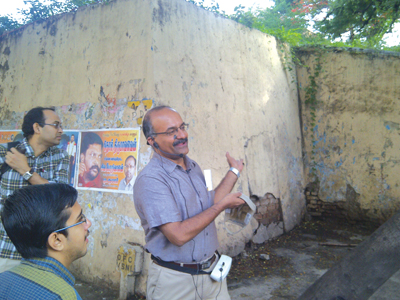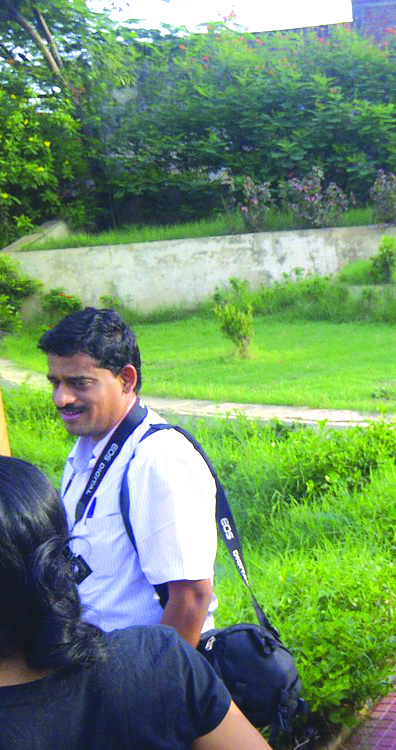 |
 |
|
Sriram V and fellow heritage buff Karthick Bhatt at the Old Town Wall (on left), and (on right) the Maadi Poonga, once again neglected on the top of the walls at their widest.
|
The previous night rains left the city wet. But there was a cool breeze as the morning broke to a clear sky. Just the weather for a Madras Week Chennai Heritage Tour. We were to trace the Old Wall with Sriram V. but had no idea which wall was being talked about (as Madras had never been referred to as the walled city).
But as the story slowly unfolded, it became clear that the Wall was one of the high-priority projects of the East India Company during its early days of trade and consolidation of power.
At different times in the mid-18th Century – from 1746 to 1767 – the French and Hyder Ali in turn threatened Madras from the north, the landward side. In 1769 the British decided to build a wall to protect Madras against any future threats. The Wall "when partially completed in 1772 ran for 3½ miles and had 17 bastions. Outside the wall, large open spaces were provided to allow a clear line of fire on any approaching enemy."
The seven gates of the wall that were the focus of the walk were the Boatman Gate near Port Trust quarters, Pulley Gate near the road leading to Royapuram, Tiruvottriyur Gate next to Stanley Hospital, Ennore Gate near Mint, Elephant Gate, Chucklers' Gate near the Gujarati choultry, and Hospital Gate near the General Hospital. Why some of these gates got these names is not known.
Paul Benfield who built Chepauk Palace was also the builder of the Wall. The Company wanted to tax the Indian population to fund the construction of the wall. This was vehemently opposed by the Indians and shrewd lawyers argued that collecting money from the people was improper. When the matter was referred to the British Parliament, it ruled in favour of the people. But Wall Tax Road remains in name to represent the western stretch of wall (that is no more but which was never taxed anyway).
All that is left of the Wall is a stretch at the northern edge of George Town before you enter Royapuram. Here the Wall's old Pulley Gate has been hideously restored, and Maadi Poonga, a park brought to life from time to time on top of the wall – you can imagine how thick it was – is at the moment once again little cared for.
|